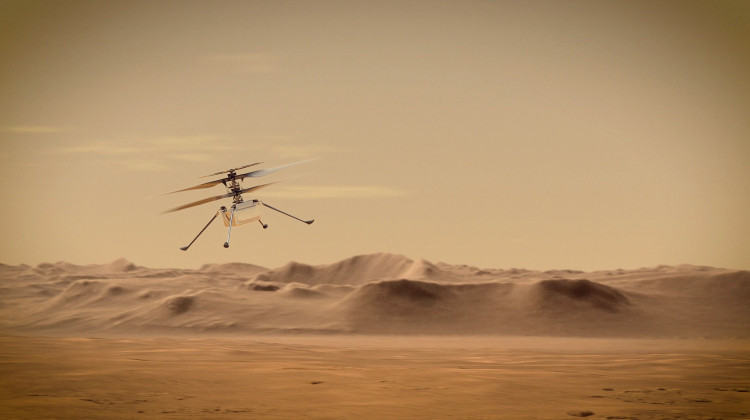NASA has revealed that extreme temperature differences between day and night on Mars have put a strain on Ingenuity's helicopter components. Mission team members disclosed in a status update that recent diagnostics found a failure in the vehicle's inclinometer, one of its navigational sensors.
After landing in Mars' Jezero Crater in February 2021, Ingenuity, the small helicopter that accompanied NASA's Perseverance rover, was tasked to control only a few flying tests.
With 28 flights under its belt, Ingenuity has far exceeded design goals. However, since the craft's arrival, conditions in Jezero Crater have changed.
The inclinometer is in charge of providing gravimetric data to Ingenuity's flight software before takeoff. This data allows Ingenuity to establish its position relative to Mars' gravity and allows calculations of the vehicle's roll and pitch preparatory to departure, according to Ingenuity chief pilot Håvard Grip of JPL in the status update.
The vehicle's software cannot identify optimal orientation for Ingenuity during flying without this initial data. Grip and his colleagues, however, believe that redundancy in the helicopter's sensor array will allow them to keep Ingenuity flying.
Members of the mission team had anticipated inclinometer failure in a variety of scenarios, so they had a software patch ready to solve the problem well before the rover/copter combination arrived on Mars last year.
The helicopter's navigational instruments include an inertial measurement unit (IMU) for measuring acceleration and angular velocities, a laser rangefinder for measuring altitude, and a camera for taking pictures during flight, in addition to the inclinometer.
To determine orientation, both the inclinometer and the IMU use accelerometers. However, the inclinometer only works during preflight and not during flight. With the inclinometer out of commission, the Ingenuity team intends to use the accelerometer in Ingenuity's IMU to acquire both preflight gravity data and in-flight inertial awareness.
According to JPL officials, the software fix will take several sols (Martian days) to fully upload before being followed by another round of vehicle diagnostics.
"Barring additional surprises, we anticipate that Ingenuity will take to the skies for Flight 29 - a repositioning move to the southwest designed to keep us within communication range of Perseverance - in the near future," Grip said.
In April 2021, during the spring season in the Jezero area, ingenuity took to the skies for the first time. Winter temperatures, which can plummet below - 112 degrees Fahrenheit (minus 80 degrees Celsius) at night, are forcing Ingenuity to make changes to its activities and software in order to keep the vehicle operational throughout the winter.




